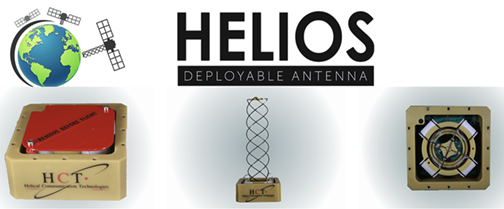
Helical Communications Technology (HCT) has announced that their custom-built Quadrifilar Helical Antennas are now being tested live on Hiber’s smallsats, according to Sal Bologna, President of HCT.

The ground stations have begun receiving information controlling the satellites’ Internet of Things (IoT) capabilities. The first two satellites launched into LEO at the end of 2018 from Vandenberg Air Force Base in California and the Satish Dhawan Space Centre in India.
Providing antennas with modules aboard for multiple companies on one satellite is rare, and HCT is the first U.S. antenna manufacturer to launch and test in this capacity.

There will be a total of sixty (60) satellites entering orbit upon completion of the project. HCT is also providing assistance with testing the ground station to ensure uninterrupted transmission. Another prominent Israeli space agency will also use HCT antennas aboard their test platform in the coming days resulting in a significant number of antennas being ordered.
HCT designed the custom-built “quadrifilar” helical antennas at their Rockledge-based operations and shipped them to the Netherlands where Hiber is based. Hiber then shipped the smallsats to their launch destinations in California and India.
In remote regions and developing countries worldwide, subscribers purchase a low-cost modem which they can integrate with existing connected technology devices, allowing them to connect to Hiber’s IoT network. The goal is to have a constellation of dozens of satellites which will enable customers to send SMS-sized messages in real time from IoT-devices, such as sensors on fishing vessels or monitoring devices remote devices in places such as Antarctica.
Founded in 2013 by Salvatore Bologna and Gregory O’Neill, HCT began researching and designing a unique omni-directional antenna for cubesat satellites that capture a much larger footprint of geography and topography on the Earth. Within four years, HCT had developed a design that can be scaled depending on the customer’s requirements to have a wide range of circularly polarized antenna patterns.
Hiber, based in Amsterdam, contracted with HCT to send their smallsats on this mission with the objective to offer IoT connectivity to the 90% of the world which currently lacks access to a network. The company expects to launch multiple smallsats within the next year to keep up with customer demand.

